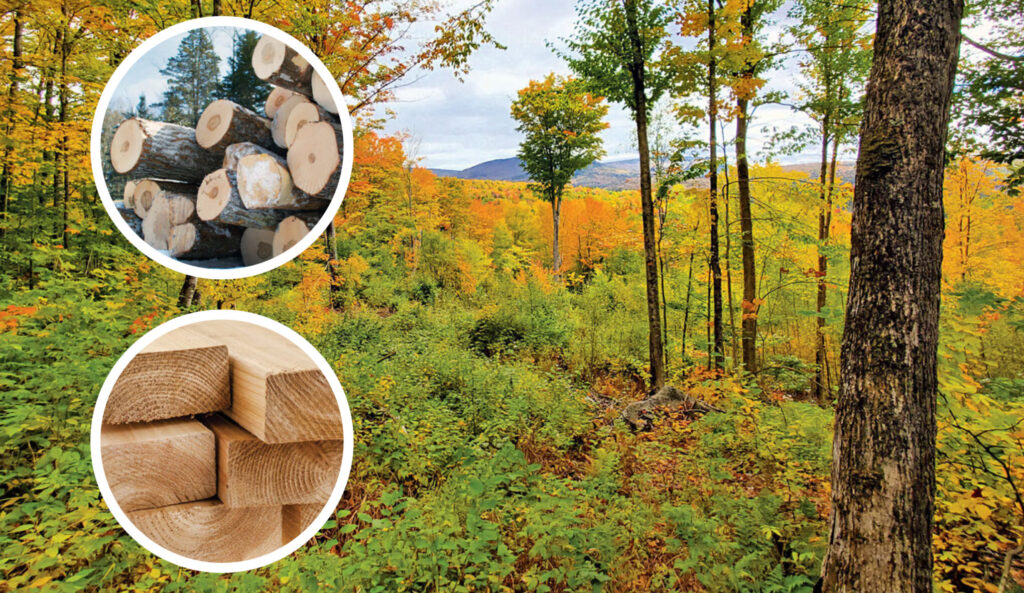
The forests of New England are crucial to supporting biodiversity and providing ecosystem services like clean air and water, carbon sequestration, and recreation opportunities. At the same time, wood remains an important renewable resource that we all rely upon and that can replace more carbon-intensive materials. And yet, there is a considerable deficit between the wood that New England produces and the wood the region consumes with even greater discrepancies in individual states. In addition, most of New England’s forests lie vulnerable to conversion to non-forest, leading to the loss of all forest benefits.
A new report by Senior Scientist Dr. Caitlin Littlefield highlights the opportunity for New England to dramatically expand forest protections and sustainably meet our wood product needs. The report, Beyond the “Illusion of Preservation,” revisits a 20-year-old study by the same name to quantify the imbalances between production and consumption in all New England states and provides a path forward for remedying that imbalance. Littlefield and her co-authors found that New England produces three-quarters of the wood it consumes with even starker disparities within the region: 70% of the region’s production comes from Maine while 70% of the region’s consumption occurs in Connecticut, Massachusetts, and Rhode Island. Meanwhile, there’s mounting pressure to curtail all harvesting, especially on public forests, to maximize forest carbon. And yet, curtailing harvesting without reducing consumption will simply exacerbate New England states’ reliance on forests elsewhere to fuel the considerable consumption levels of New Englanders. That leakage will do little to reduce global CO2.
Moreover, despite covering 80% of the region, only one-quarter of New England’s forests are formally protected and about 30,000 acres are lost to development each year. As the report asserts, this means that the region needs to dramatically accelerate protection of wild forest and sustainably managed forests to take greater responsibility for regional resource demands.
The report sets forth three key steps, to be achieved by 2060: 1) permanently protect New England’s forests with at least 10% of the landscape in passively-managed wild lands and 60% in actively managed forest; 2) reduce consumption of lumber and paper by 25% while meeting urgent housing needs and increasing recycling; 3) expand the practice of ecological forestry and shift production to more durable wood products.
A goal of ecological forestry is to harvest wood products in ways that emulate natural patterns and dynamics of the forest and that sustain key values like habitat for a diversity of wildlife. The approach might not produce as much harvestable wood as rapidly as other practices like intensive plantations, but it does produce a steady output of long-lived, high-market value wood products, while also sustaining other ecological values. The report calculates that, if ecological forestry were expanded to 20 million acres across all states in the region and the consumption reduction goal was achieved, the region could sustainably meet its wood needs.
Littlefield was invited to give the keynote address at the 2024 New England Society of American Foresters annual meeting in South Burlington, VT. Both the address and the report have been very well received, and Littlefield has continued to share the work via multiple webinars, including to Vermont’s Agency of Natural Resources, the Northern Forest Center, the Rhode Island Woodland Partnership.
[DOWNLOAD THE REPORT HERE]
